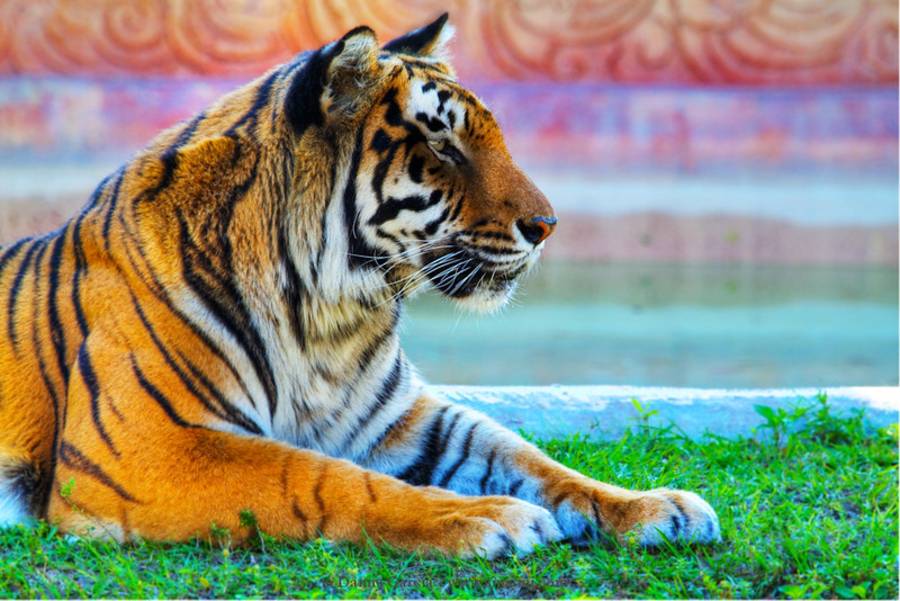Bengal Tiger
What species and family does the Bengal Tiger belong to?
The scientific name of a Bengal Tiger or Royal Bengal is Panthera tigris Tigris. It falls into the Felidae family and belongs to the Panthera tigris species.
What are its physical characteristics?
Male Bengal Tiger
A male Bengal Tiger measures 2.7 to 3.1 m in length and has a weight of 180 to 250 kg. Its maximum skull length ranges between 329 to 378 mm. The average length and weight of a male tiger are 2.9 m and 220 kg respectively. The canine teeth of gown ups measure 10.16 cm each.
Female Bengal Tiger
The length of a female Bengal Tiger ranges between 2.4 to 2.6 m and its weight comes around 100 to 160 kg. The maximum skull length of female measures between 275 and 311 mm. On average, a female Bengal Tiger measures 2.5 m in length and weighs about 140 kg. The canine teeth of large individuals measure 10.16 cm each.
What constitutes a tiger’s diet?
The Bengal Tiger basically preys on a wild pig, wild cattle, and several species of deer. It has also been known to prey on young elephants. It approaches the prey slowly and silently finally pouncing upon it. The Bengal Tiger mostly hunts during nighttime. During the day, the cover of the tall ‘elephant grass’ serves as an excellent camouflage for the feline. Several cases of tigers bringing a bull tusker. The Bengal Tiger also preys on Peacocks and can even climb trees to hunt for primates.
What kind of habitat is needed?
The tiger lives in varied habitats ranging from open jungles, humid evergreen forests to mangrove swamps. Its preferred habitats include thickets, long grass, and tamarisk shrubs along the rivers. The tiger is mostly solitary but sometimes can be seen in a group of 3-4. Its life span is 18 years in captivity and a few years less in the wild.
What is the degree of protection provided?
The Bengal Tiger has been conferred upon the privilege of being the national animal of India. After the execution of the Project Tiger Scheme, there has been witnessed a drastic increase in the population of wild tigers. The tiger population of India now records 3500 up from a mere 1200 in the 1970s. Land developments and poaching are a big threat to this species of Bengal Tigers.
When does a tiger turn into a man-eater?

A tiger may sometimes turn into a man-eater. There could several possible reasons behind the menace. An aged, sick, and injured tiger when losing the flexibility and the energy needed to capture the prey, it turns into a man-eater. The tigers of the Sunderban forests are reported to have been sick constantly on account of the high content of salt in the water of the area and they find hunting difficult. The other obvious reason is the easy and constant access to the Sunderban people while they gather for fishing and honey collection in the wild. The taste of human flesh may also be taken into account.
Jim Corbett, in his book “ Maneaters of Kumaon,” describes the notorious Champawat Tiger who alone devoured 436 people in the early 20th century. The record still remains unsurpassed.
Where are the Tiger Reserves in India located?
The Bandhavgarh National Park (Madhya Pradesh), the Kanha National Park (Madhya Pradesh), the Corbett National Park(Uttar Pradesh), the Dudhwa National Park (Uttar Pradesh), the Ranthambore National Park (Rajasthan), Sundarban National Park (West Bengal), Manas Tiger Reserve (Assam), the Nandankanan Zoo (Orissa) and the Sariska Wildlife Sanctuary ( Sariska) are the Tiger Reserves of India.



